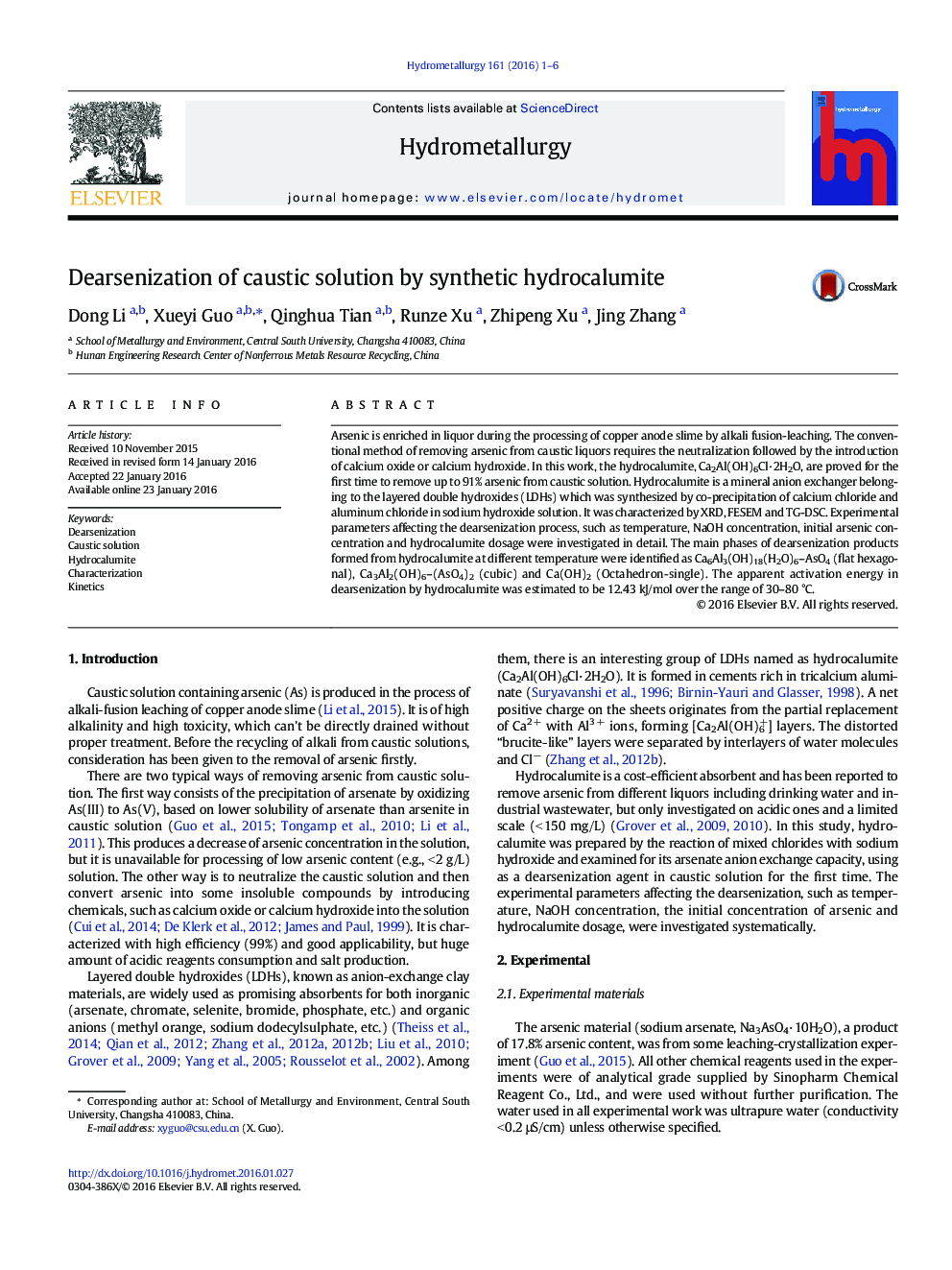| Article ID | Journal | Published Year | Pages | File Type |
|---|---|---|---|---|
| 211824 | Hydrometallurgy | 2016 | 6 Pages |
•Hydrocalumite, Ca2Al(OH)6Cl·2H2O, was synthesized to remove arsenic from caustic solution for the first time.•Various parameters associated with the dearsenization process were investigated and up to 91% arsenic was removed.•The dearsenization kinetics was studied and the apparent activation energy was estimated to be 12.43 kJ/mol.
Arsenic is enriched in liquor during the processing of copper anode slime by alkali fusion-leaching. The conventional method of removing arsenic from caustic liquors requires the neutralization followed by the introduction of calcium oxide or calcium hydroxide. In this work, the hydrocalumite, Ca2Al(OH)6Cl·2H2O, are proved for the first time to remove up to 91% arsenic from caustic solution. Hydrocalumite is a mineral anion exchanger belonging to the layered double hydroxides (LDHs) which was synthesized by co-precipitation of calcium chloride and aluminum chloride in sodium hydroxide solution. It was characterized by XRD, FESEM and TG-DSC. Experimental parameters affecting the dearsenization process, such as temperature, NaOH concentration, initial arsenic concentration and hydrocalumite dosage were investigated in detail. The main phases of dearsenization products formed from hydrocalumite at different temperature were identified as Ca6Al3(OH)18(H2O)6–AsO4 (flat hexagonal), Ca3Al2(OH)6–(AsO4)2 (cubic) and Ca(OH)2 (Octahedron-single). The apparent activation energy in dearsenization by hydrocalumite was estimated to be 12.43 kJ/mol over the range of 30–80 °C.
